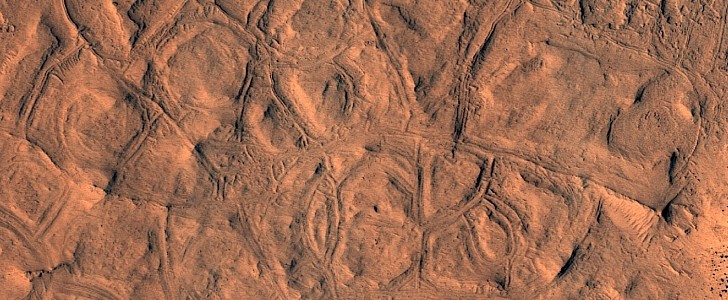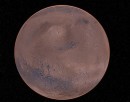There is a great deal of strange shapes in nature, shapes one would normally associate with the activity of an intelligent species. But that’s not always the case. Take polygons, for instance. We can find them here on Earth in the form of crystals, rock outcrops, you name it.
Ever since we’ve begun studying the other planets of our solar system, we’ve learned such shapes are quite common. Mars, constantly under scrutiny thanks to the many pieces of hardware we have there studying it, has shown that as well – even if, granted, it sometimes surprises with features that can’t be found anywhere else.
The image we have here is yet another of those incredible stills snapped from orbit by the HiRISE camera. It was taken back in 2020, but only recently made public by NASA and the University of Arizona.
It shows a portion of Elysium Planitia, one of the planet’s best-known regions, and a great deal of polygons that can only be seen, more often than not, with the help of the potent HiRISE.
The polygons are completely natural, and they’re believed to form “due to the contraction and expansion of ice under the surface.” These ones, says NASA, are “unusually well-preserved,” and that allows us to “take a more detailed look at their textures with this observation.”
They are so well preserved, in fact, that in some circumstances, when looked at in a certain way, they resemble the remnants of some ancient Martian city, with roads crisscrossing each other between the foundations of strangely shaped buildings.
As for the HiRISE, the orbital camera has already sent back tens of thousands of pics of Mars, and NASA is only scratching the surface in releasing them, so stay tuned for even more incredible instances of the Red Planet in the months to come.
The image we have here is yet another of those incredible stills snapped from orbit by the HiRISE camera. It was taken back in 2020, but only recently made public by NASA and the University of Arizona.
It shows a portion of Elysium Planitia, one of the planet’s best-known regions, and a great deal of polygons that can only be seen, more often than not, with the help of the potent HiRISE.
The polygons are completely natural, and they’re believed to form “due to the contraction and expansion of ice under the surface.” These ones, says NASA, are “unusually well-preserved,” and that allows us to “take a more detailed look at their textures with this observation.”
They are so well preserved, in fact, that in some circumstances, when looked at in a certain way, they resemble the remnants of some ancient Martian city, with roads crisscrossing each other between the foundations of strangely shaped buildings.
As for the HiRISE, the orbital camera has already sent back tens of thousands of pics of Mars, and NASA is only scratching the surface in releasing them, so stay tuned for even more incredible instances of the Red Planet in the months to come.






